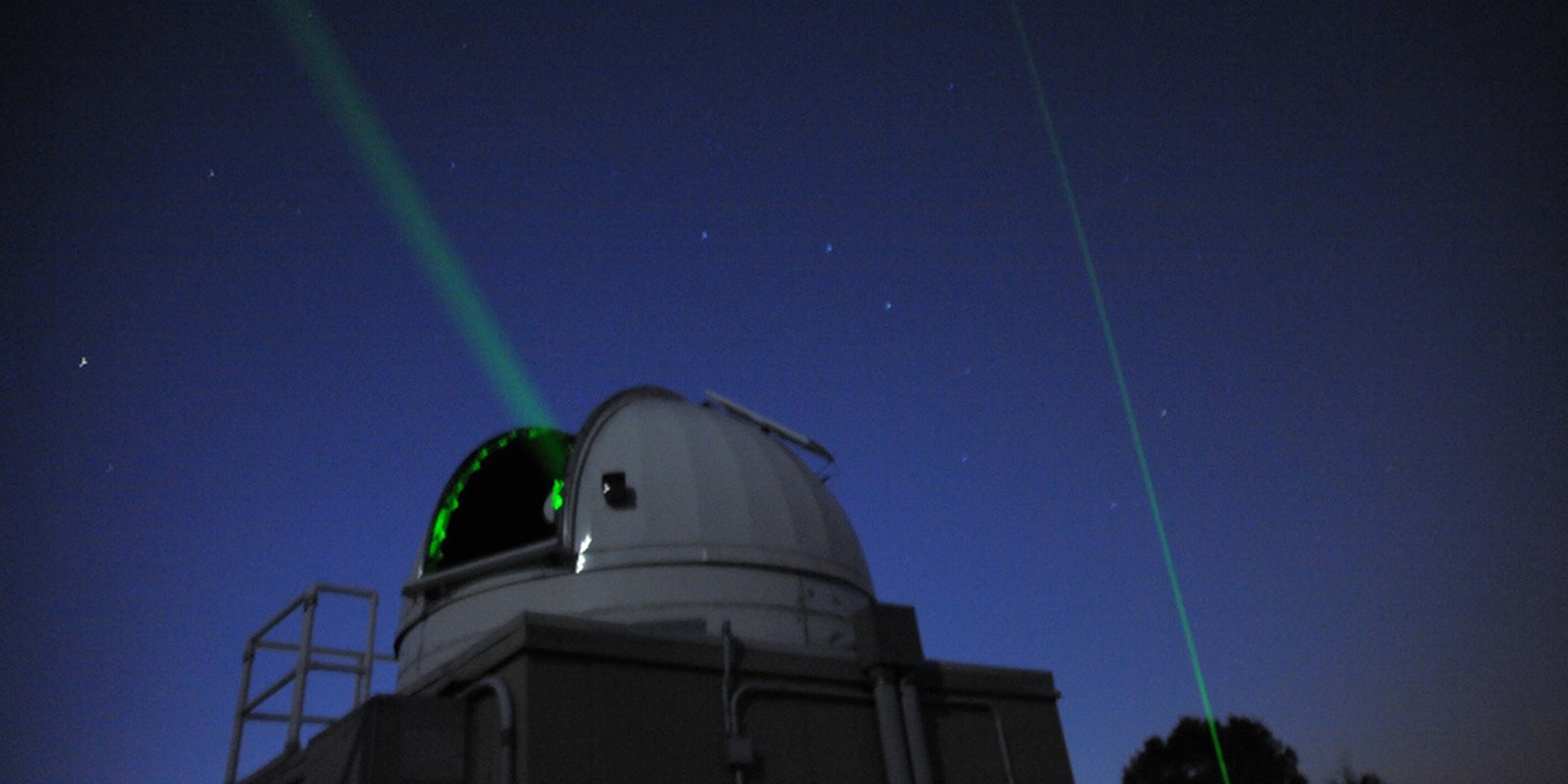The ability to transmit data from space just made the jump to light speed.
Earlier this month, NASA successfully tested a new technology that allows the agency to beam images, videos, and other data from space to Earth on lasers rather than the old fashioned way—on radio waves.
The benefit of the laser technology, which NASA calls the Optical Payload for Lasercomm Science or OPALS, is, of course, greater transmission speed. The increase could be anywhere from 10 to 1,000 times as fast, according to NASA researchers, who described OPALS as “an upgrade from dial-up to DSL” in a recent article on the NASA website.
“NASA missions collect an enormous amount of data out in space,” said Matt Abrahamson, the project manager for OPALS. “Laser communications is a faster alternative for getting those data to the ground.”
The first successful trial of OPALS came on June 5, when the research team overseeing the project beamed a 36-second high-definition video from the International Space Station to the Table Mountain Observatory in Wrightwood, Calif. The video, titled “Hello, World,” explores the history of communication, from horse-carried missives and telegraphy to laser-beam data packages.
The video’s transmission took about 3.5 seconds, when normally it would have taken more than 10 minutes, according to NASA. The challenging part, NASA said, was achieving the necessary precision when beaming the laser from the fast-moving Space Station to a target on Earth.
OPALS is said to have achieved a maximum transfer speed of 50 Mbps during the transfer, which is significantly faster than the terrestrial Internet speed in the U.S.
Maybe when NASA perfects the technology, the agency can share it with Netflix, so we can get our streaming video by superfast laser instead of having to rely on infuriating Internet service providers.
Clarification: An earlier version of this article said that NASA’s video transmission took “less than three minutes.” The actual time was approximately 3.5 seconds.
Photo via NASA Goddard Space Flight Center/Flickr (CC BY 2.0)


